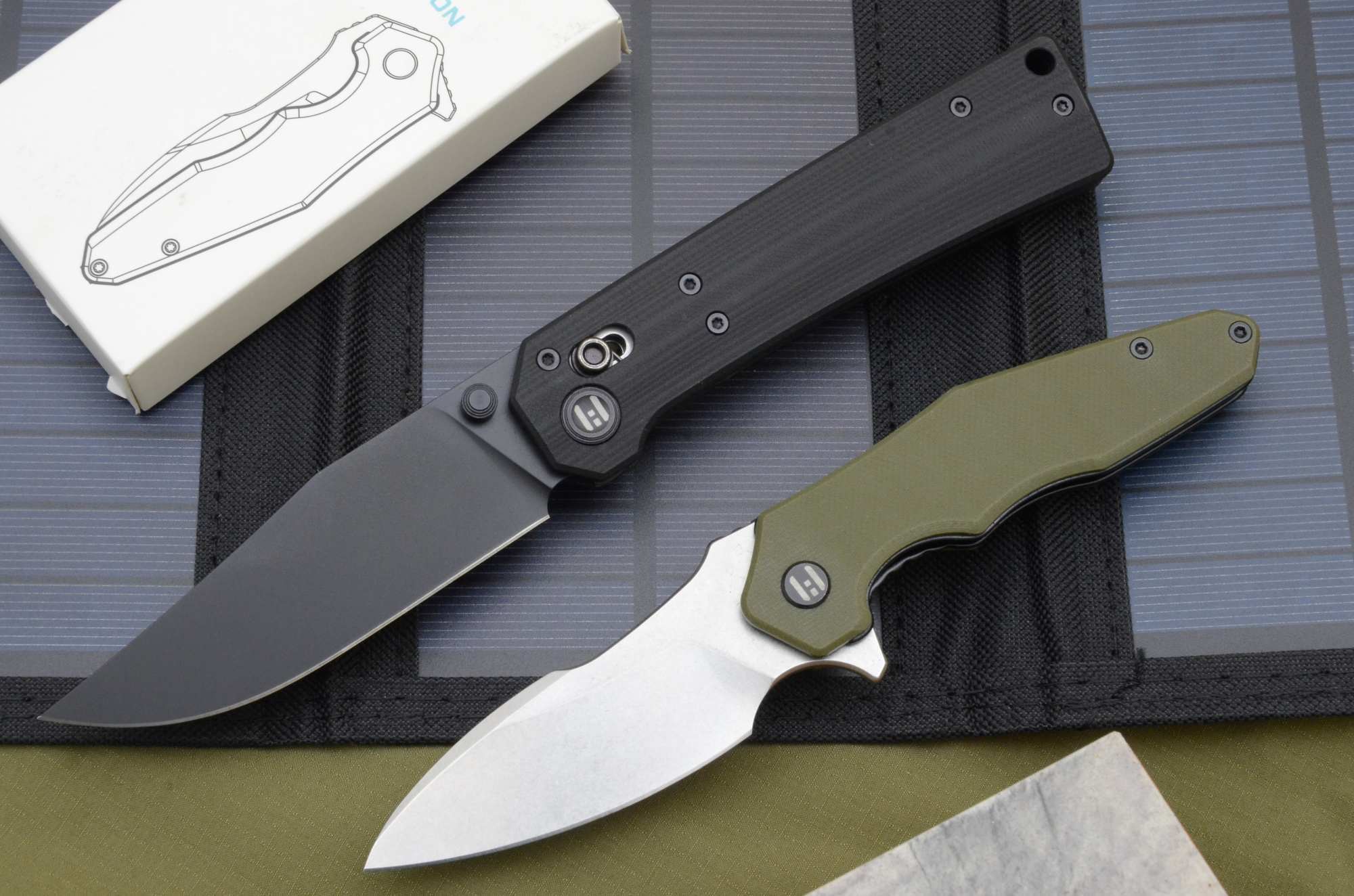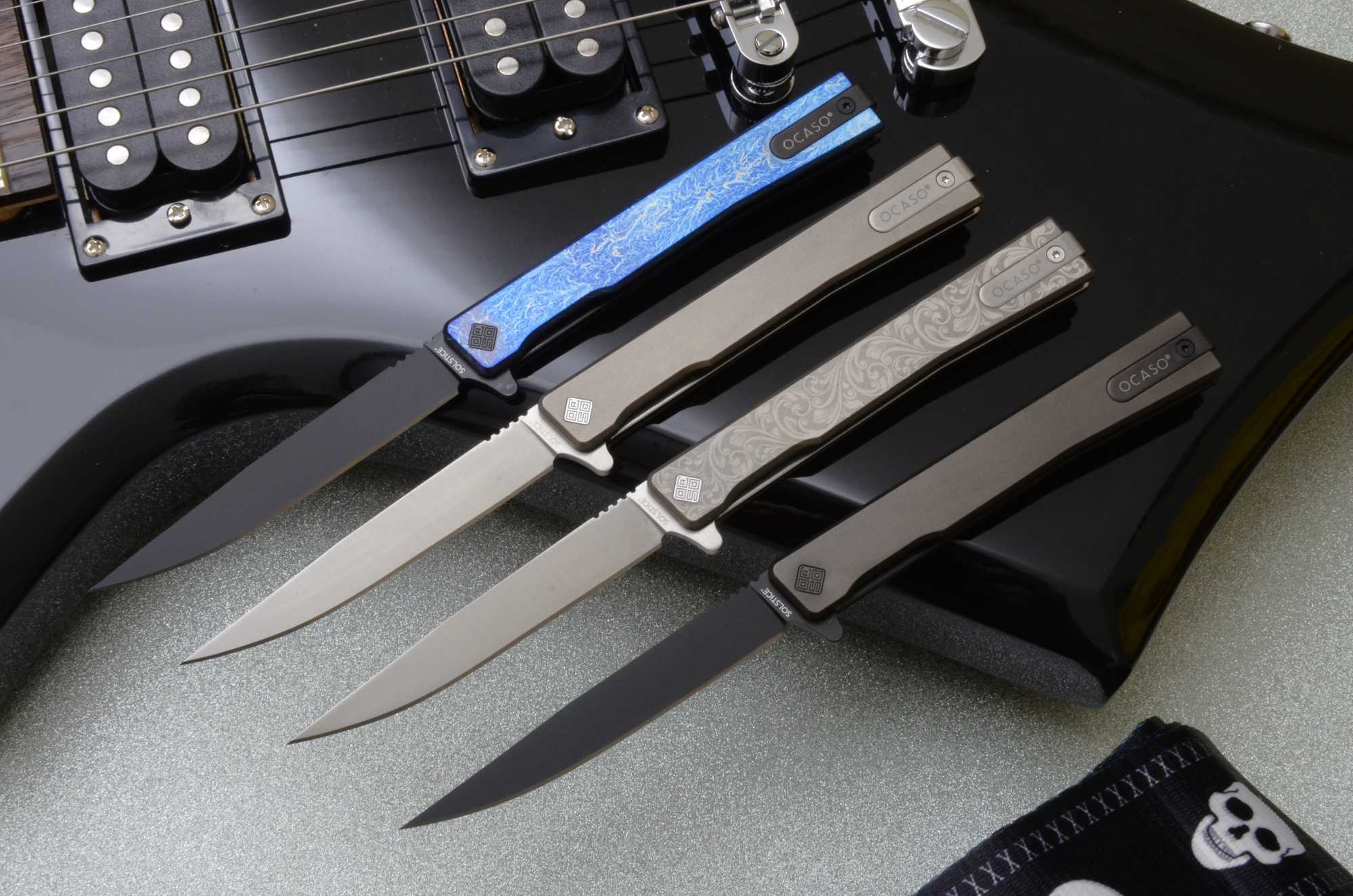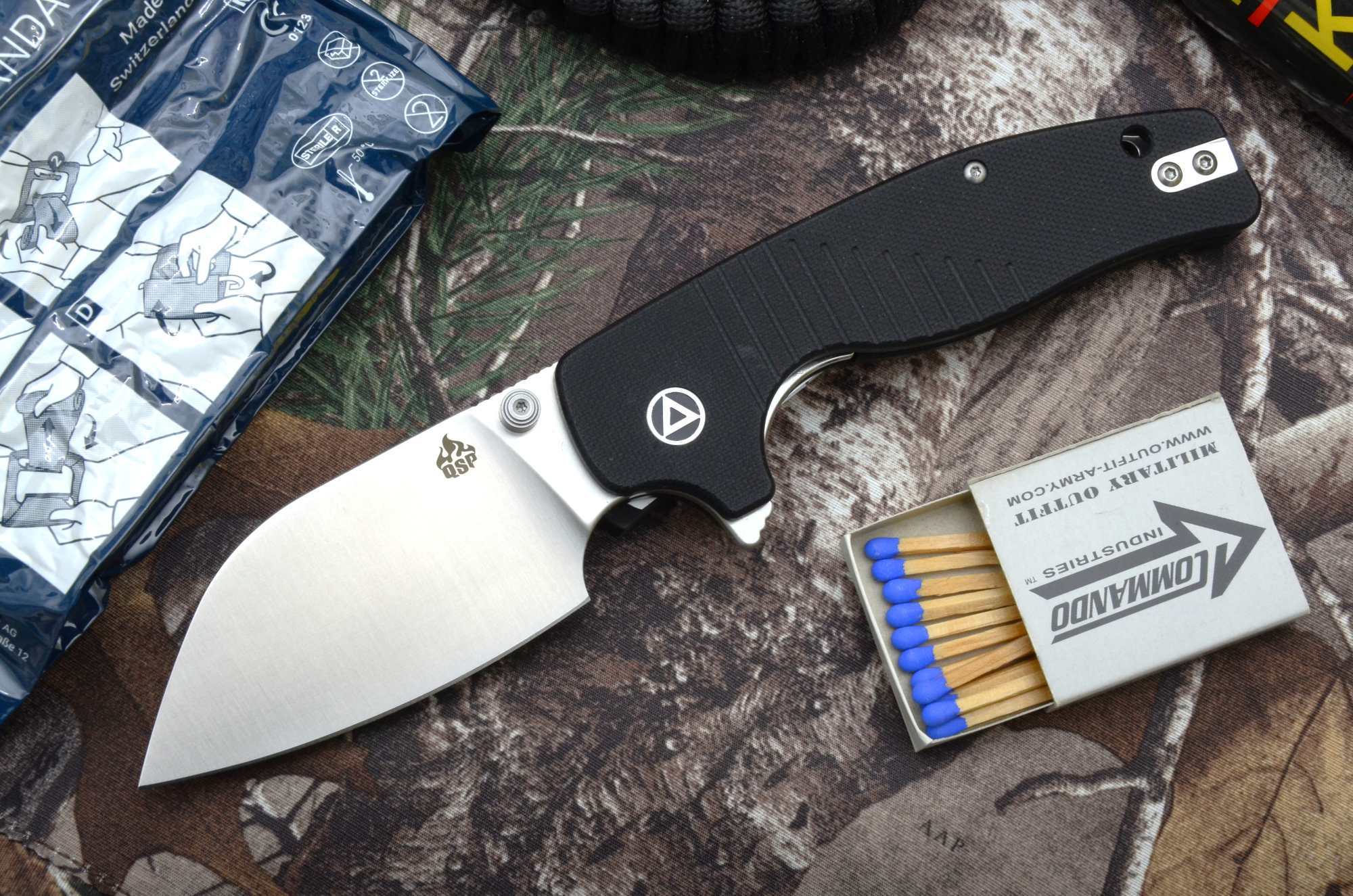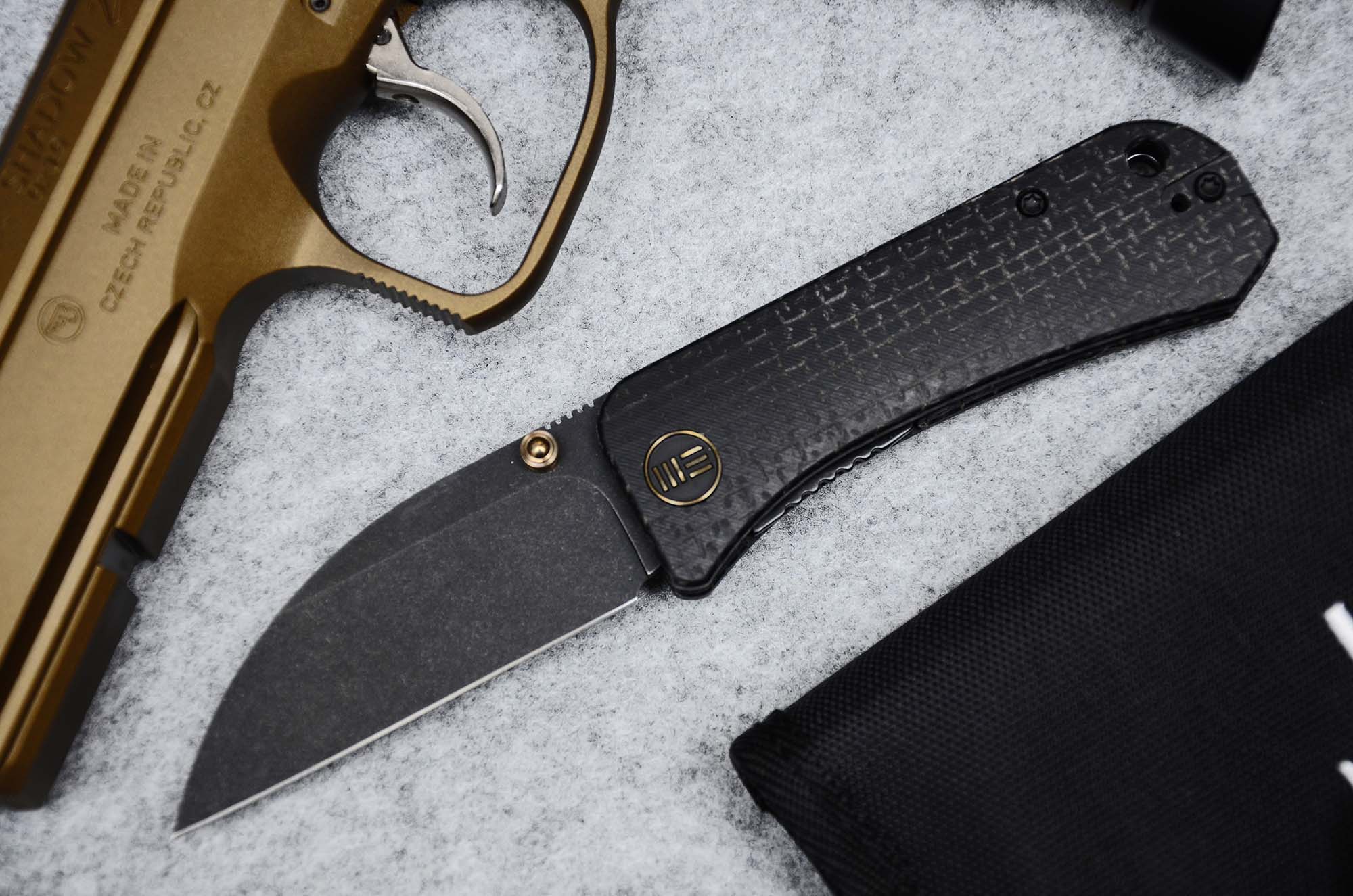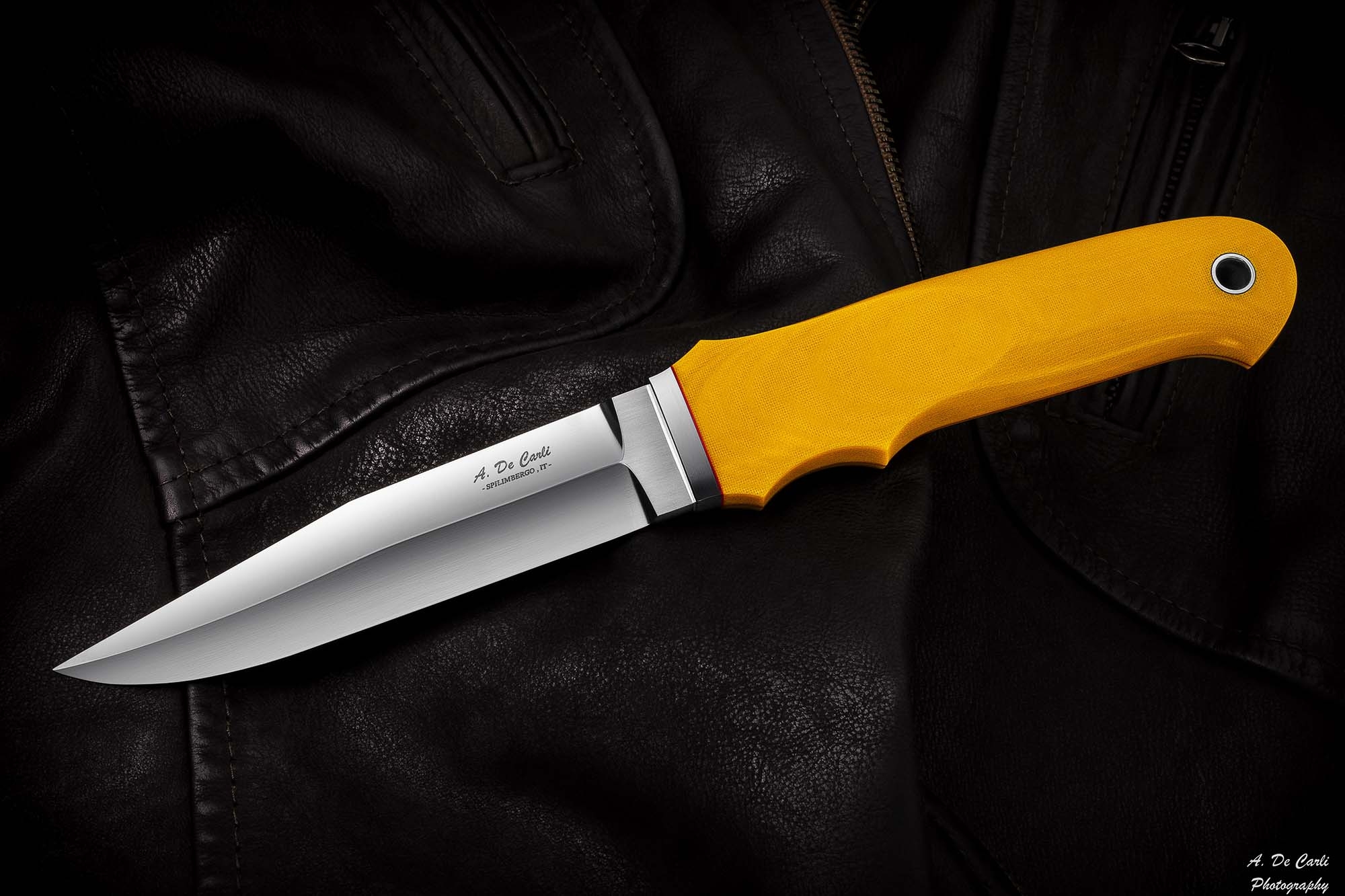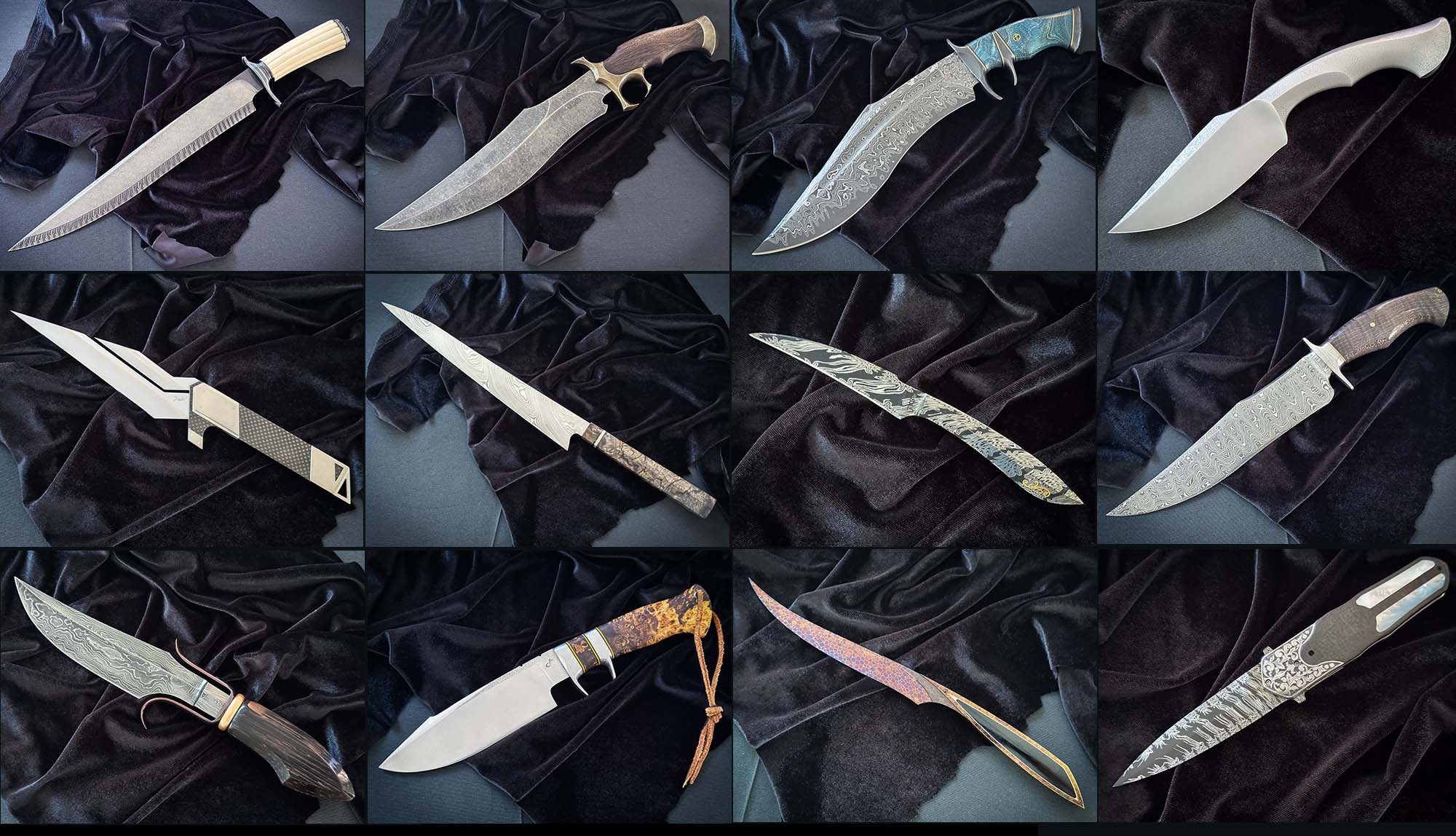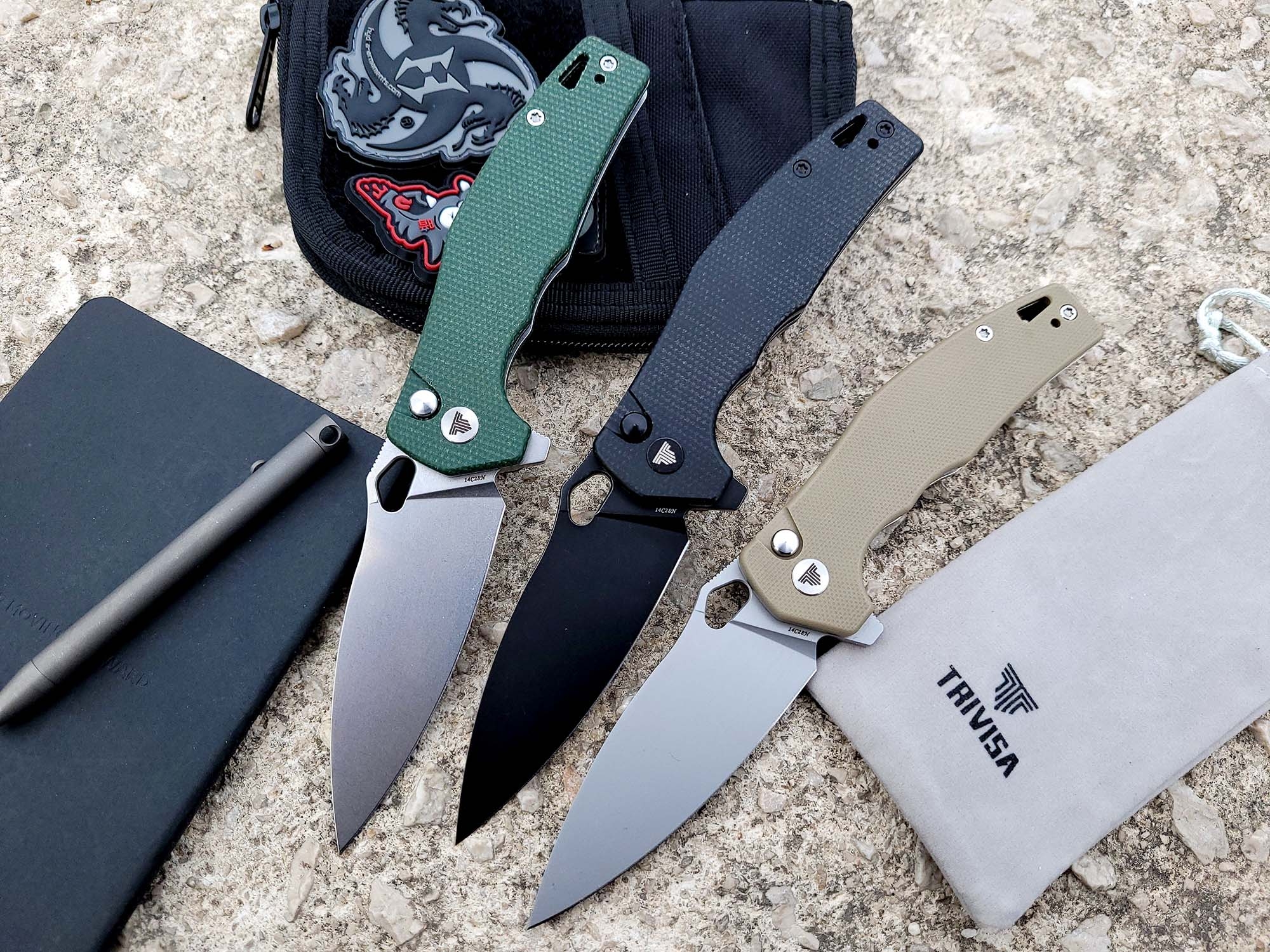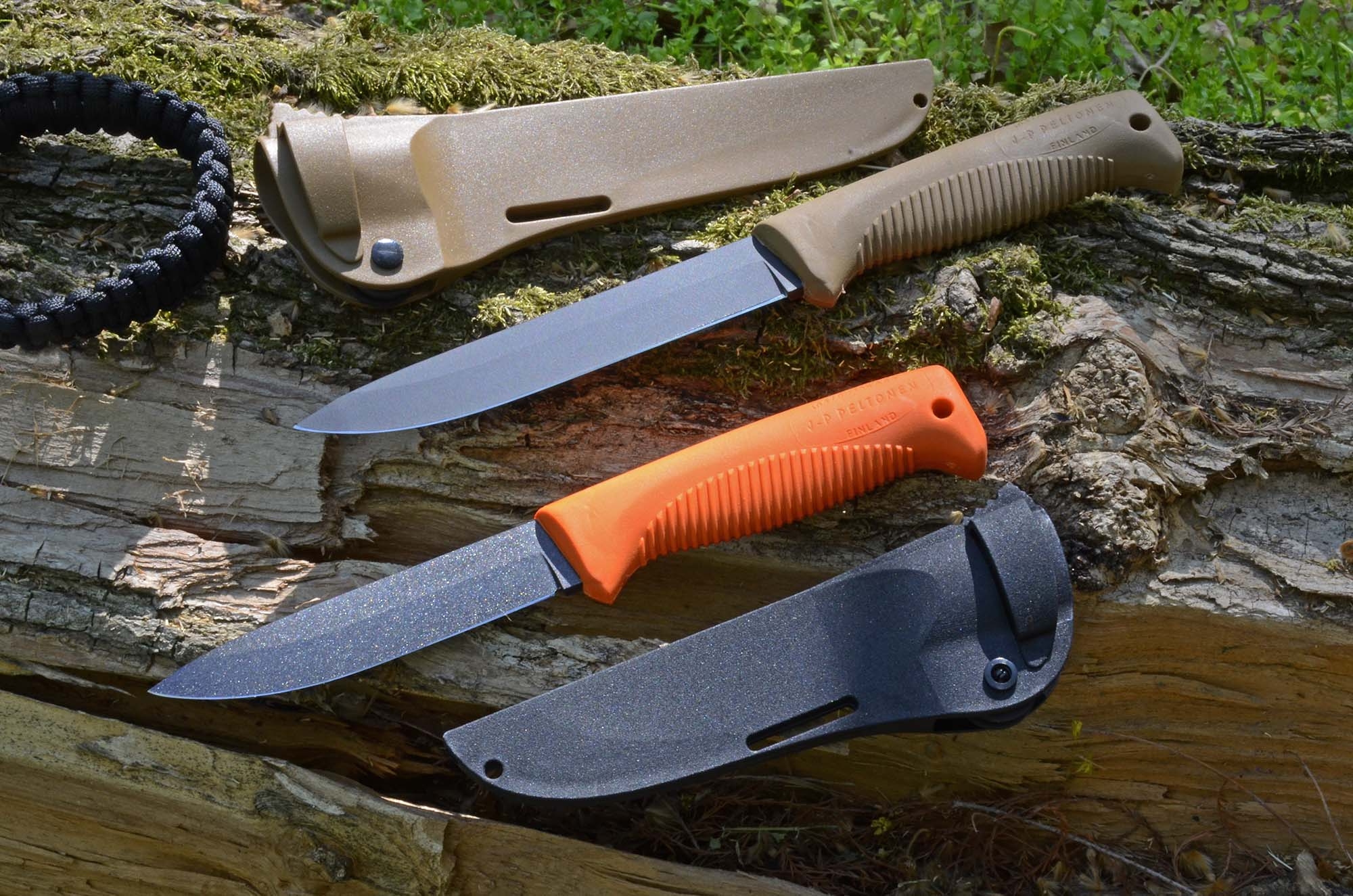Hello, Gianluigi, good to see you. Give us some personal information about you: how old you are and since when have you been making knives?
I was born in 1951 and I've been making custom knives for over thirty years. I started working at the Coricama (“Coltellerie Riunite di Caslino e Maniago”, United Knives Factories of Caslino and Maniago) when I was 16. Founded in 1873, Coricama professionally trained generations of artisans, producing scissors, knives, pliers, surgical instruments and cutting tools.
Why did you choose the pseudonym Wilson?
When I was a boy in juke-boxes there was always some record of Wilson Pickett and at the time I was a big fan of his and I always played his songs. So, when I entered the bar, my friends started saying, "Here comes Wilson." So I decided to turn that nickname into a brand, and it worked.
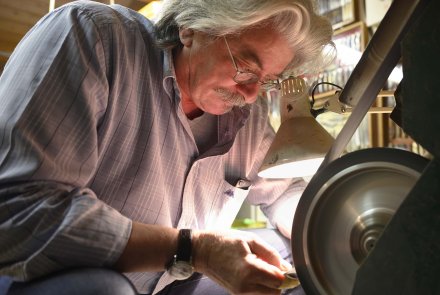
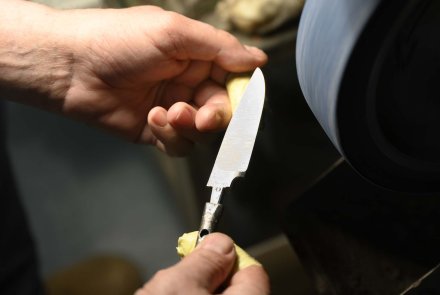
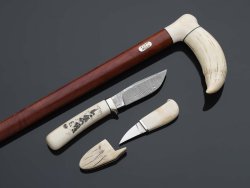
When you started making knives, there was no Internet and good information was rare. How did you manage to find information?
Back then, I only had the "American Knives" book – which I still have. I bought it and started getting ideas. The first knives I made for myself were beautiful, but compared to the ones I saw at the Munich exhibition – the first one I went to – they were a disaster. At first I wanted to give up, but then I took heart, I committed myself and slowly reached a certain level of quality. Of course, I don't attain the perfection you get with a numerical control machine, but I do everything with my hands and I have a fair amount of imagi.
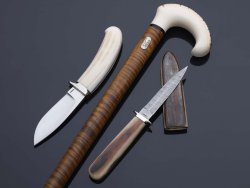
Do you remember what year we're talking about?
I think it was 1995. The first year I went as a visitor, but then I joined the D.M.G. Deutsche Messermachergilde, the German Knifemakers Guild, since nothing similar existed in Italy.
And this brings us to the next question: you were one of the foundfounders of the Italian Knifemakers' Guild. How did the first group of founders meet?
We met in Scarperia, where one of the very first knifemakers exhibition had been organized. One evening at dinner, when talking with the late Gianpaolo Negretti, a collector and great enthusiast, he launched the idea of creating a guild in Italy too. He pulled the right strings and one day we all found ourselves in Sasso Marconi. It was 1996 and there was me, Santino Ballestra, Franco Bonassi, Francesco Pachì, and Reinhard Tschager. I left the Guild about two years ago because of differences of opinion.
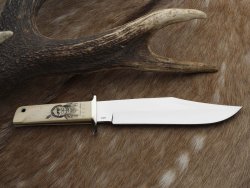
Let's come to your knives: how would you define your style?
I make knives that can be used, and I'm sorry if the people who buy them don't use them. A lot of times people say, "They're expensive, shame to use them..." and I usually reply, "A car costs a lot more, yet you use it." Sure, a knife should not be used as a chisel – every tool must be used for the task it was made for.
I always have a small knife in my pocket, which is what you use every day. For me, the pleasure of using a knife is essential. It seems absurd to have a jewel-knife and not to use it.
Anyway, back to my knives, I only make fixed-blade models – Bowie, Gentleman, Skinner models and so on. So far, I've only made one folding knife.
What equipment do you use?
My equipment is limited: a belt sander, a drill and many files. That's all I got.
What are your favorite materials?
I try to be inspired from time to time. Whether it's a piece of scrap or an excellent material, I try to make a knife that you can always use. Obviously, if I'm asked to make a hunting knife that will be used a lot, my choice is RWL34 or D2 steel.
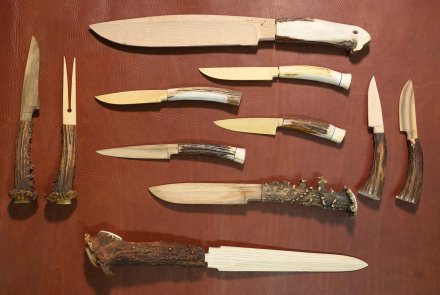
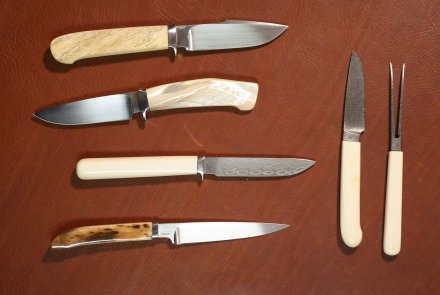
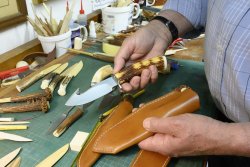
Is it true that before making a knife you make a wooden model?
Yes, before making a knife I make a wooden model that helps me to get an overview.
Do you make the sheaths too?
Yeah, I do everything in my workshop. The only external processing is the heat treatment of the blade.
How has the world of custom knifes changed since you started?
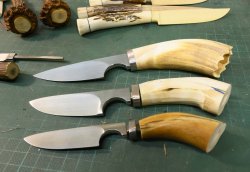
I'd say it's changed a lot. First of all, now there are many knifemakers, and many of them are really good, but in my opinion they are all focused on a kind of high-end knives, often made with the use of machinery. You still need basic manual skill, of course, but numerical control machine helps you to get certain finishes. Every now and then someone asks me: "What kind of sandpaper do you use for finishing?" and when I answer that I use 600 grit at most, they are disappointed. But it doesn't make sense to me to finish a blade with 1200 grit sandpaper: as soon as you use it, you'll scratch it... I always compare a knife to a piece of furniture: for me an antique dresser with signs of use is still more beautiful than a new and immaculate one. Because it has lived, it bears the marks of life – in short, it has a soul. I like the patina: when I sculpt boxwood for my sticks I like to see the patina of the wood getting darker and more beautiful every day
Tell us a little bit about these walking sticks.
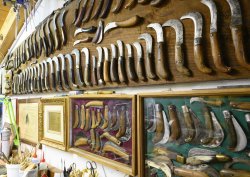
More than walking sticks they are “furnishing sticks”, even if they can be used for walking. It's no longer the era of gentlemen going for a walk with a cane, even if some still exist, thankfully. Then I also started making tops, since I met a spinning top maker, a gentleman from Livorno who is now almost eighty years old. I make them and put them in a vase, and every now and then I give them to my friends or trade them.
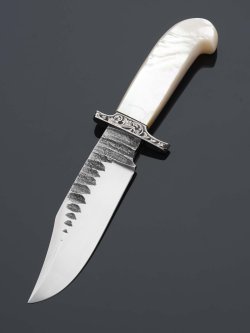
Where can I see your knives?
You can see something at the Coltelleria Lorenzi knife shop in Bolzano, while my folding knife is at the Coltelleria Preattoni knife shop in Milan. I almost don't participate in knife fairs anymore. I had one in Villaco, Austria in the first days of May, but with the Covid emergency everything was cancelled. I also exhibited a couple of knives in Maniago and I also exhibited my knife collection.
It's true that you are also a great knife collector? Tell us in short: how many pieces and what kind of knives do you have ?
I have about 3,500, a few of all kinds, including the cheapest ones that were made in Maniago when I was a child and there was a workshop in every yard. They're part of the history of this territory now
Thank you Gianluigi, for this interesting chat. One last thing: how can people contact you?
I don't like and I don't use internet and social networks, so those interested can contact me by phone at +39 339 4879106.



